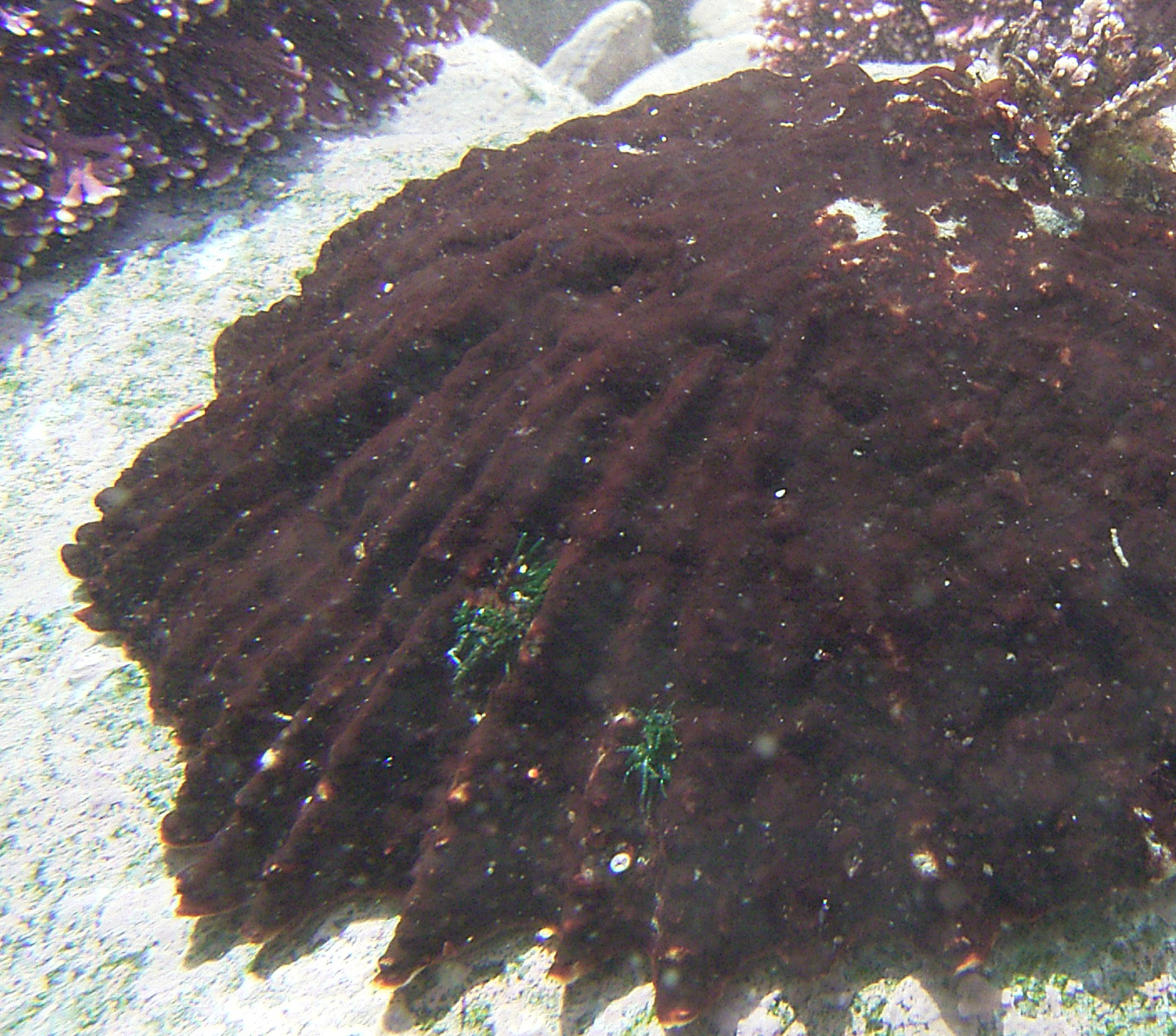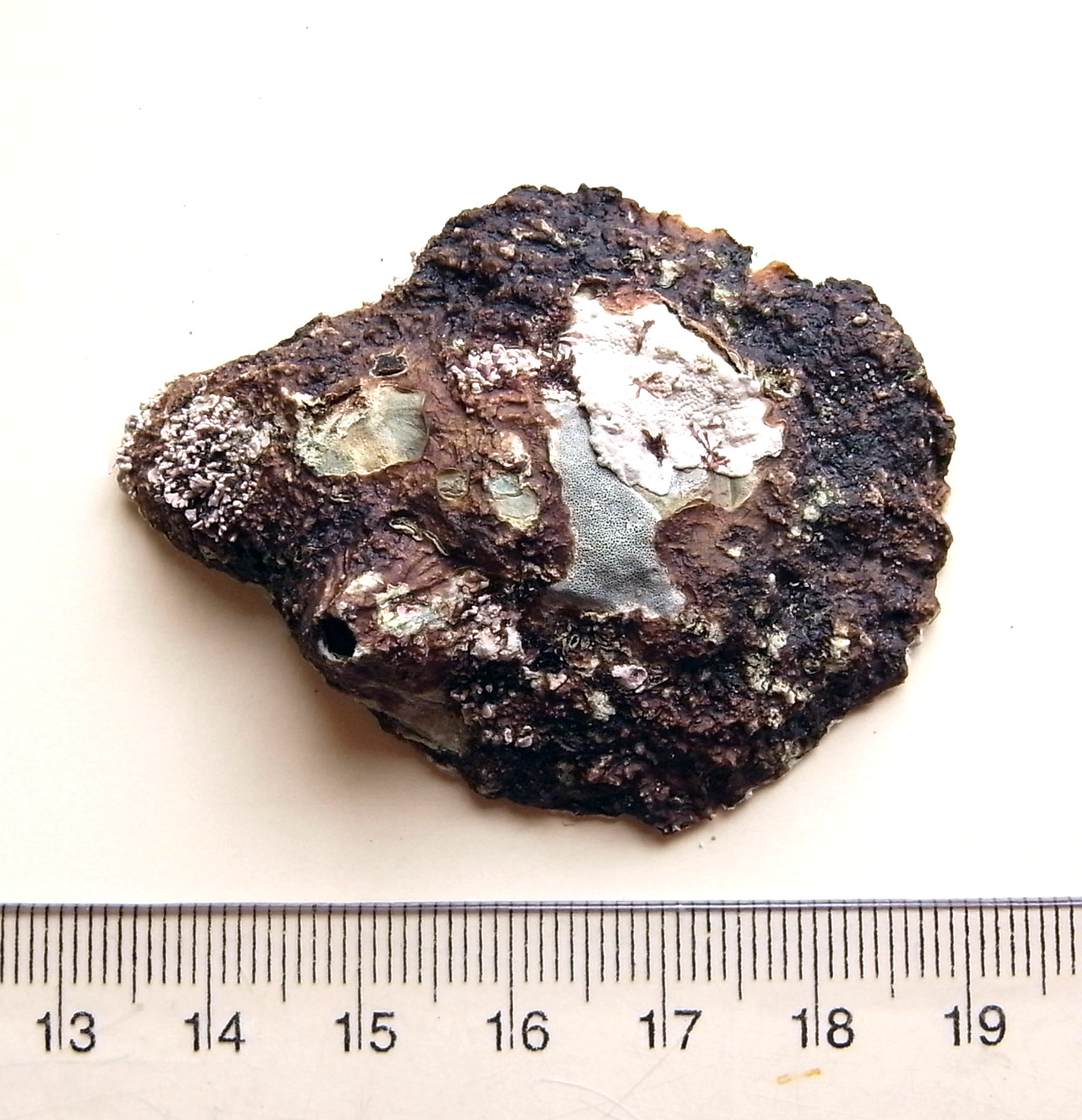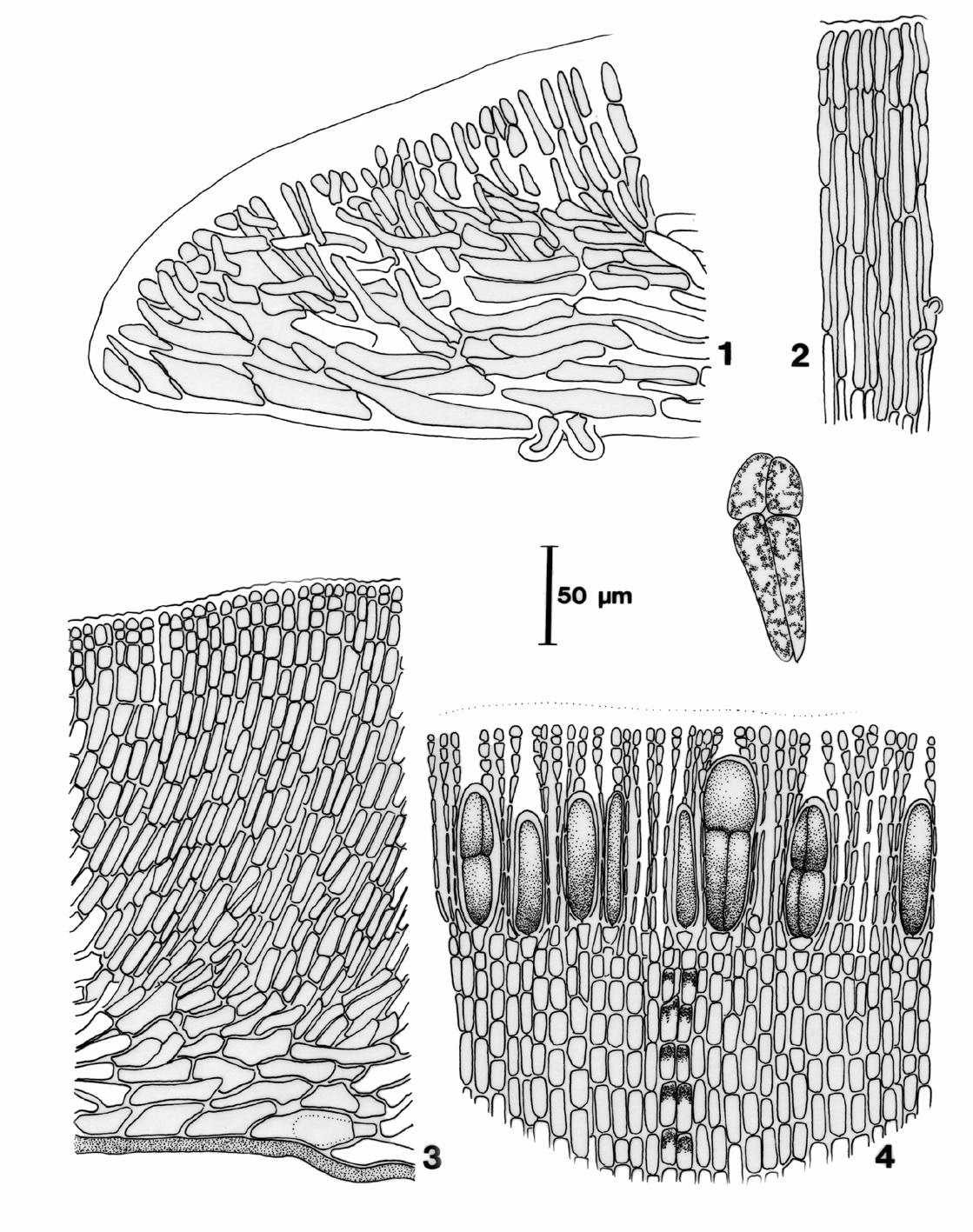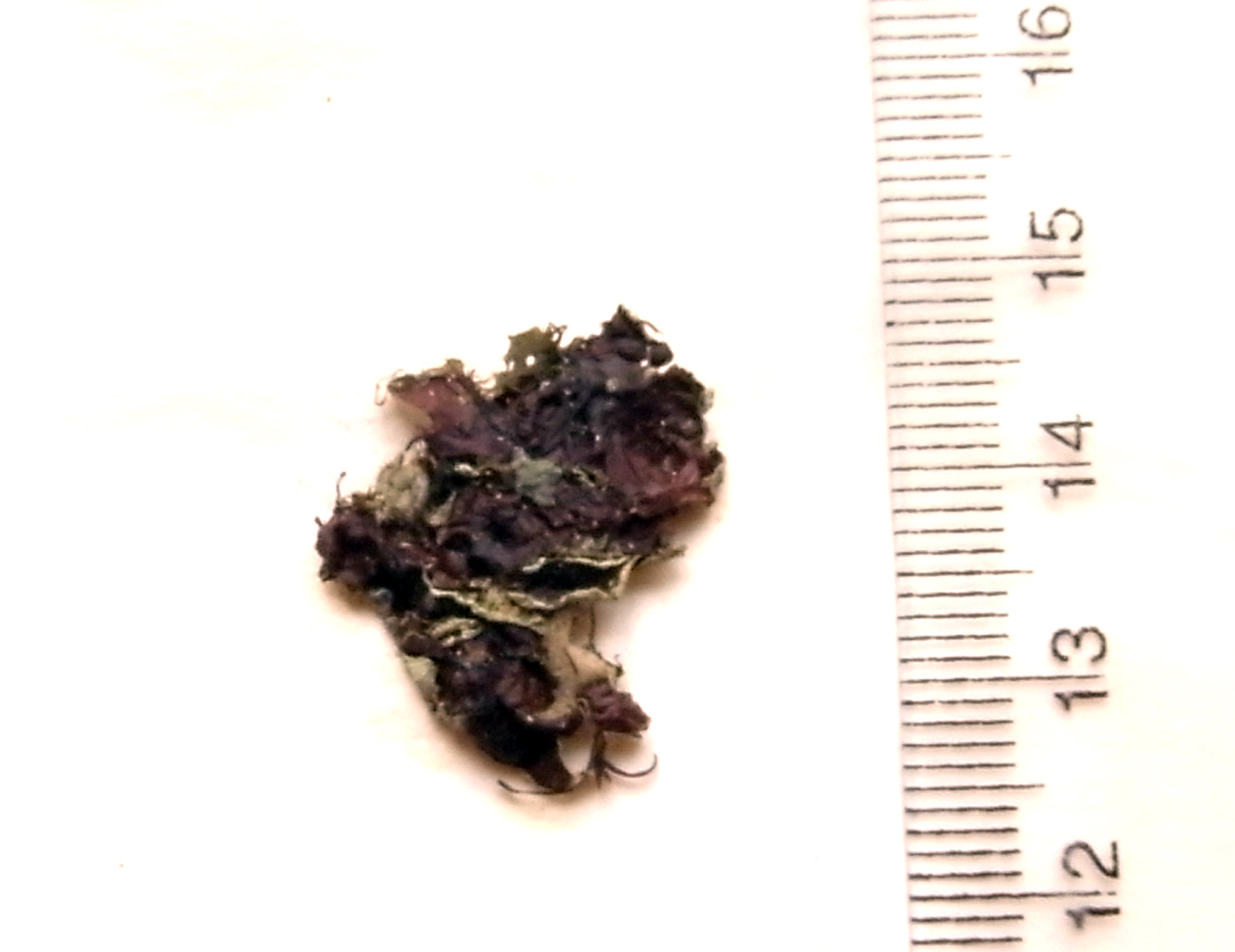Seaweeds of the South African South Coast


Order Peyssonneliales
Family Peyssonneliaceae
Peyssonnelia atropurpurea Crouan & Crouan 1867: 148
Plants dark red to almost black, glossy, crustose, several cm in diameter, strongly adherent with only extreme edge slightly raised. In radial vertical section thalli up to 500 µm thick, margin tapering, cells of basal layer long and narrow, some with one short unicellular rhizoid cut off anterior ventral end, calcification present in hypobasal layer; ascending filaments arising at acute angle and becoming erect near surface of thallus, internal calcification absent. Tetrasporangia in immersed sori that barely protrude above thallus surface, cruciately divided, up to 90 µm long and 30 µm wide, borne on short cup-shaped stalk cells. Paraphyses slender, up to 150 µm (7-10 cells) long. Sexual reproductive structures unknown.
Collections, ecology and regional distribution
Recorded in Namibia (Rull Lluch 2002) and along the South African west coast (Stegenga et al. 1997) to Morgan Bay (1-43). Found on crustose corallines and shells of some molluscs, in the sublittoral fringe and sublittoral zone.
World distribution: Europe, Morocco, Tunisia, also Queensland, Australia (Guiry & Guiry 2013).
Type locality: Brest, France (Guiry & Guiry 2013).
Note: Two other prostrate Peyssonnelia species were tentatively recorded from the south coast, but these require confirmation from better material. A possible specimen of P. calcea (now referred to Ramicrusta calcea (Heydrich) K.R. Dixon) was collected at Hluleka by Bolton and Stegenga (1987): this species is highly calcified (see Denizot 1968: p 132). Possible specimens of P. simulans were collected at Bird Island (Anderson & Stegenga 1989) and Natures’ Valley: these dark pink crusts are loosely attached, with unicellular rhizoids and only hypobasal calcification, rectangular to longish basal cells (to about 40 µm long), regular assurgent filaments, and well-developed nemathecia 100-150 µm deep with tetrasporangia 50-75 µm long and 15-30 µm wide surrounded by slender paraphyses of 5-10 cells (see also Denizot 1968: p 104).

Peyssonnelia atropurpurea on Scutellastra tabularis, sublittoral, Nature’s Valley.

Peyssonnelia atropurpurea on Scutellastra cochlear, Walker Point (BOL).

Peyssonnelia atropurpurea. 1. Radial section of thallus margin. 2. Thallus margin seen from below. 3. Radial vertical section. 4. Tetrasporangial sorus in section, one tetrasporangium extruded. Reproduced from Stegenga et al. (1997).

Peyssonnelia cf calcea, Hluleka (see note under P. atropurpurea).

Peyssonnelia cf simulans, on Scutellastra longicosta, Nature’s Valley (see note under P. atropurpurea).
References Peyssonnelia atropurpurea
Anderson, R. J. & Stegenga, H. 1989. Subtidal algal communities at Bird Island, Eastern Cape, South Africa. Botanica marina 32: 299-311.
Bolton. J. J. & H. Stegenga 1987. The marine algae of Hluleka (Transkei) and the warm temperate/sub-tropical transition on the east coast of southern Africa. Helgoländer Meeresuntersuchungen 41: 165-183.
Crouan, P. L. & Crouan, H. M. 1867. Florule de Finistère. Paris et Brest, 262 pp., 31 pl.
Denizot, M. 1968. Les algues floridées encroutants (a l’éxclusion des Corallinacées). Pp [1]-310, 227 figs. Paris Laboratiore de Cryptogamie, Muséum National d’Histoire Naturelle.
Guiry, M.D. & Guiry, G.M. 2013. AlgaeBase. World-wide electronic publication, National University of Ireland, Galway. http://www.algaebase.org; searched on 27 September 2013.
Rull Lluch, J. 2002. Marine benthic algae of Namibia. Scientia Marina 66 (Supplement 3): 258 pp.
Stegenga, H., Bolton, J.J. and R. J. Anderson. 1997. Seaweeds of the South African west coast. Contributions from the Bolus Herbarium 18: 655 pp.
Cite this record as:
Anderson RJ, Stegenga H, Bolton JJ. 2016. Seaweeds of the South African South Coast.
World Wide Web electronic publication, University of Cape Town, http://southafrseaweeds.uct.ac.za; Accessed on 26 December 2025.